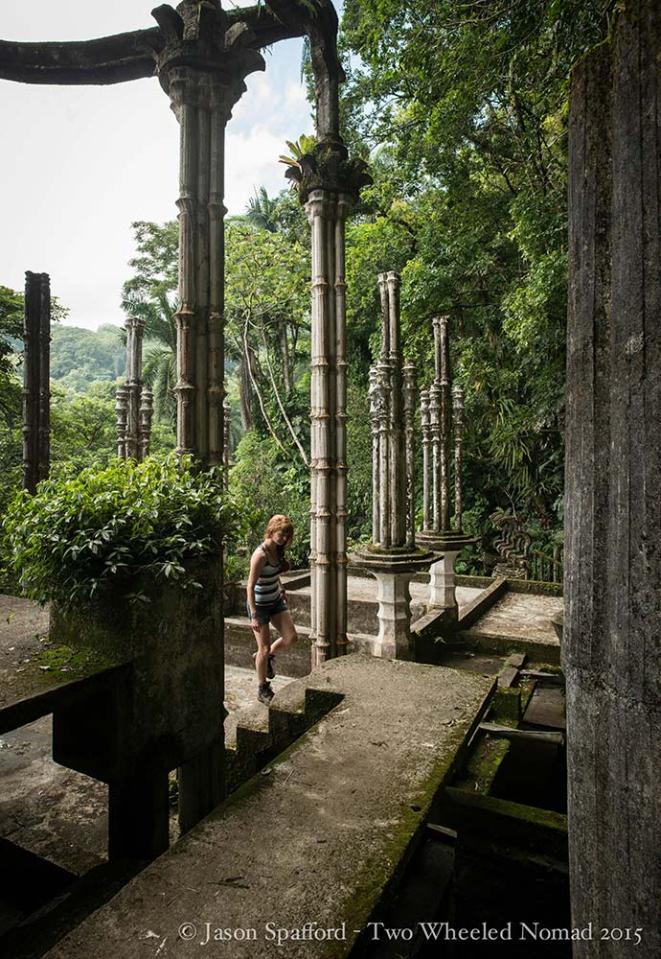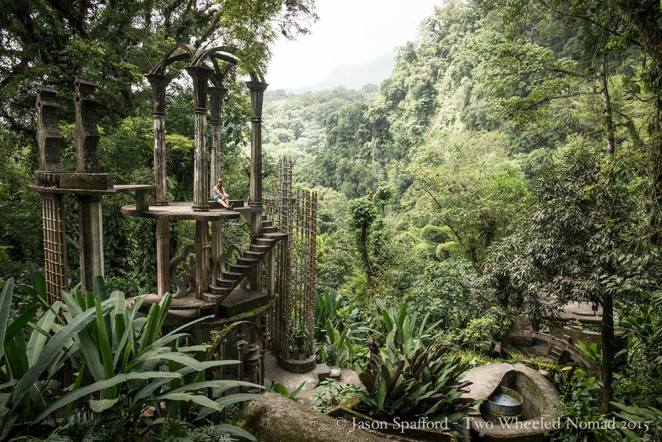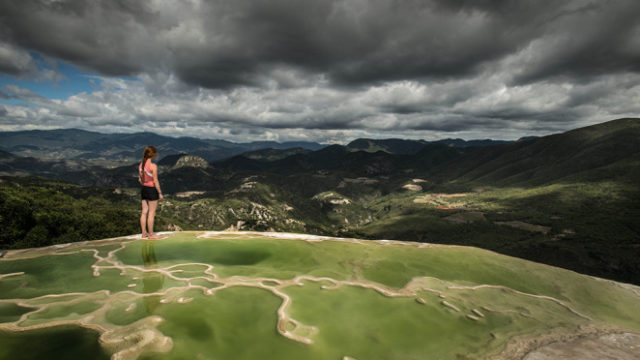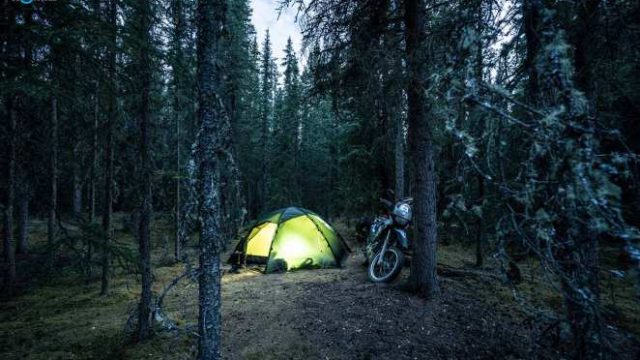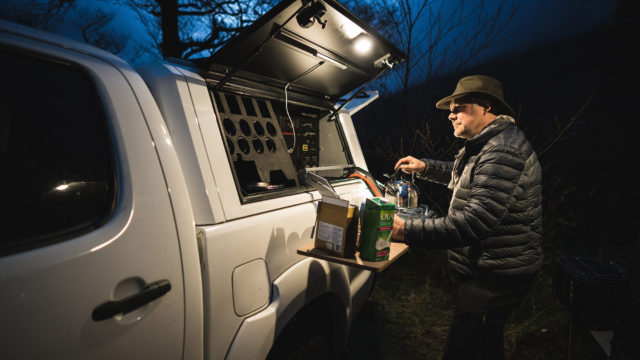The snaking road was silver in the morning sun. It was a perfect day for riding a motorcycle. And the moment we got going, the miles ticked away under the wheels. “Feels good to be back on the bikes, eh Jase?” I uttered down the helmet’s intercom enjoying the normalcy of a moving life. And in my mind’s eye agreeing with Robyn Yong who said, “We travel not to escape life but for life not to escape us”. “Yahp,” came Jason’s response.

Next stop: Las Pozas in the municipality of Xilitla (pronounced Hil-lit-la), in San Luis Potosi. Passing through Pachuca, the sweep of the hills became greater than before and they soon dominated everything else except the sky, which seemed wider. These were old mountains. They’d been nurtured by sun and rain. They were not about anarchy or grandeur, like the more photogenic ranges. These mountains threw a smooth shadow—their crags didn’t imply the gnash of continental plates. They were evenly bearded with lush trees. And they cut modest half-moons out of the sky.
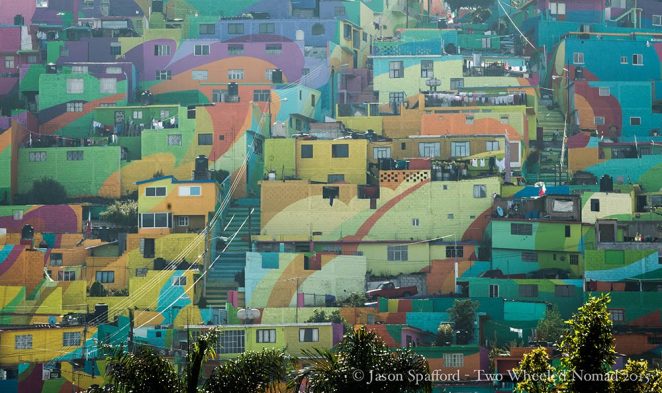
Finding Finca Santa Monica saw us come face-to-face with the campground attendant. He casually informed us that camping happened to be the same price as a cabina, 500 pesos which is on a par with £20 ($30 USD). What, for a tent on your soggy field with no hot water or WiFi? He had an odious face—a beetled brow, small eyes with bags beneath them. A blunt, brutal face. I looked down and saw his toenails. Horrible yellowing shards of rock. It stirred my dislike of this old goat with his phoney authority. His trousers were stained and shirt was strained across his chest. Every button doing its duty, I mused.
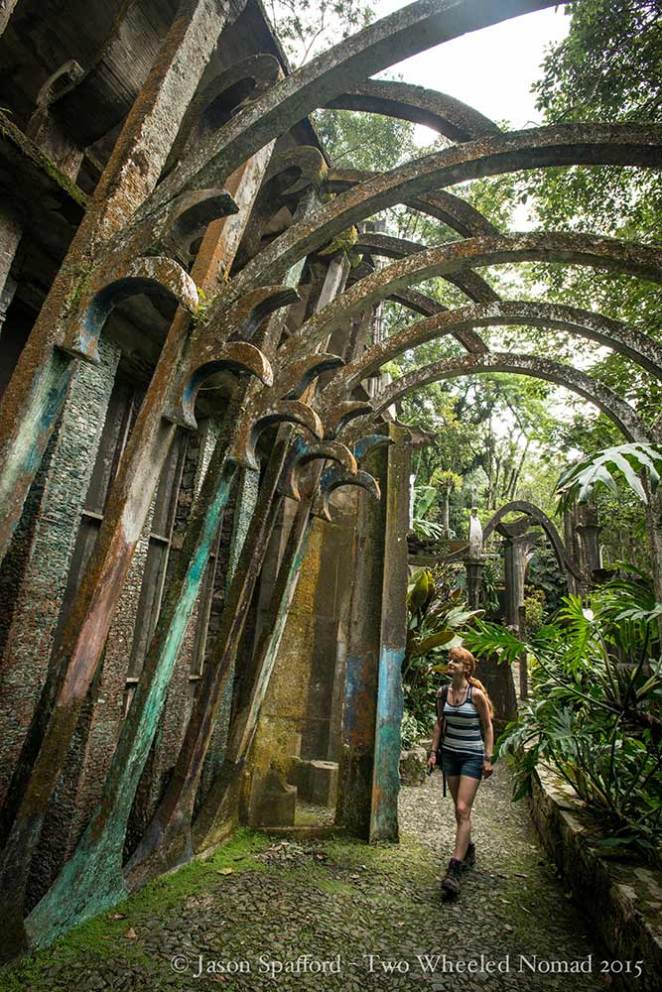
Still, as a neophyte if not ludite speaker of Spanish, I conveyed the unaffordability of both offerings with more body language than verbal. There was an unmistakable glazed artificiality to this man, our would-be-fleecer. The price came down to 100 pesos per night (around £4 or $6 USD). Just like that. Much more like it. I understood the particular sort of blatant audacity inspired by mankind’s need to spin the straw into gold but we also had to make tight ends meet.
After hopping over some gestures of gratitude, skipping a game of tennis in the adjacent courts we jumped straight into Las Pozas instead, “the [natural] pools”, half a mile down the stony tract.
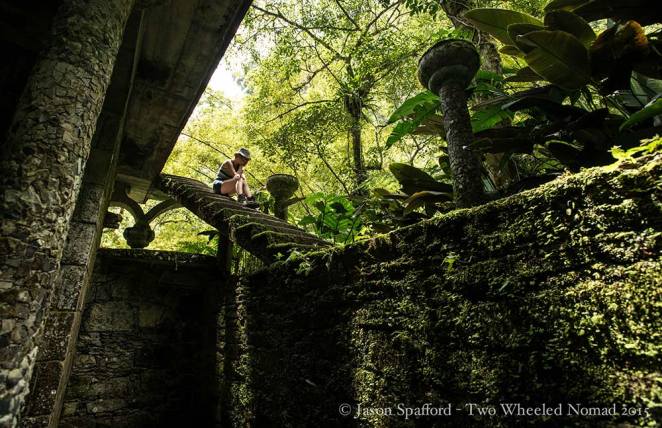
The story started with a man named Edward James. A Scotsman who was born in 1907, son of a North American railroad magnate and British aristocrat. Edward grew up in a world of wealth and privilege. Being very young, he inherited two substantial fortunes: his father’s and uncle’s. Off he went to study literature at Oxford, where he identified himself with the avant-garde bohemian world that appealed to him most.
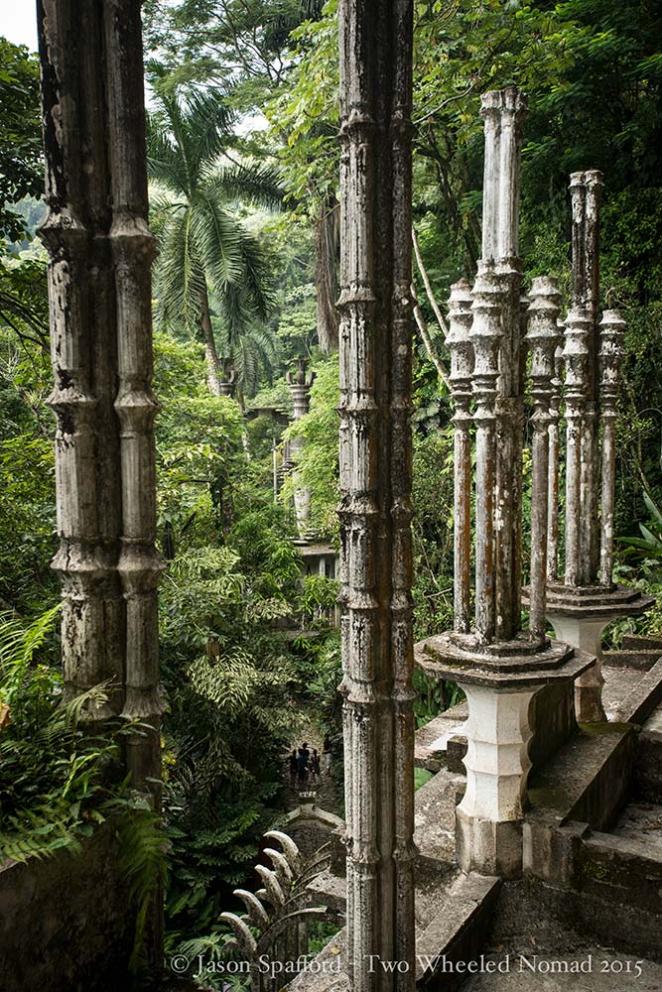
He became a philanthropist whose laudable actions aided various beneficiaries, along with seated inclination to poetry and the fine arts. Edward was a patron of René Magritte and Salvador Dalí, and later Leonora Carrington. In 1931 he married Tilly Losh, an Austrian dancer but by 1940, his marriage ended bitterly, distancing him from English high society. The United States was calling…
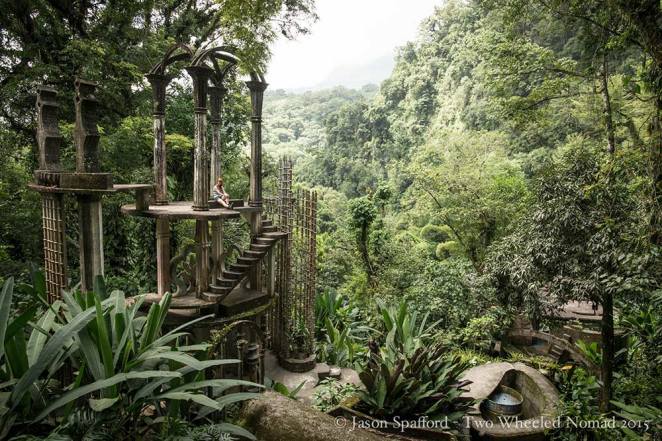
Having travelled initially, Edward arrived in Mexico four years later to visit an old friend in Cuernavaca. In the local Telegraph office, he met Plutarco Gastélum who became his partner-in-crime on the endless journey that would be the construction of the Sculpture Garden of Las Pozas. Uncle Edward became part of Plutarco and his wife Marina Llamazares’ family. Don Eduardo spilled his creativity and cash into Las Pozas, a garden of mystery that infinitely intertwines art with nature.
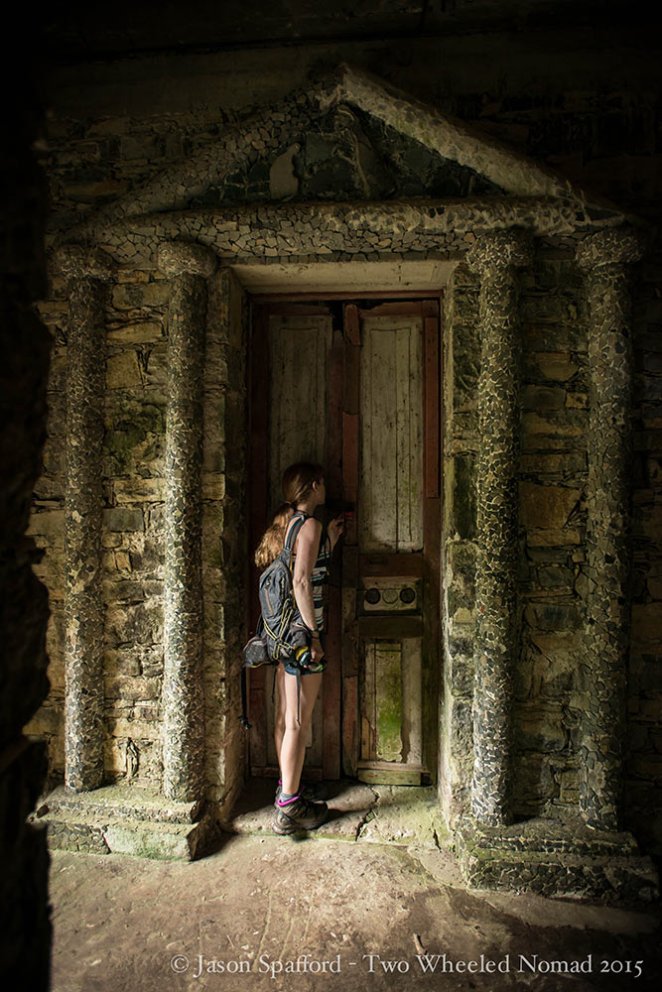
Spread over a large piece of land, crossed by a cascading river and surrounded by thick jungle, Las Pozas conceals numerous gems made from concrete and local materials. “My strange unfinished building,” as Edward called it, which began its creation during the ‘50s. One story goes that when Edward was exploring the Huasteca Potosina, emerging from a river a cloud of butterflies enveloped him, immersed in colour and movement. He interpreted the occurrence as a sign of destiny, one of life’s undeniable callings.
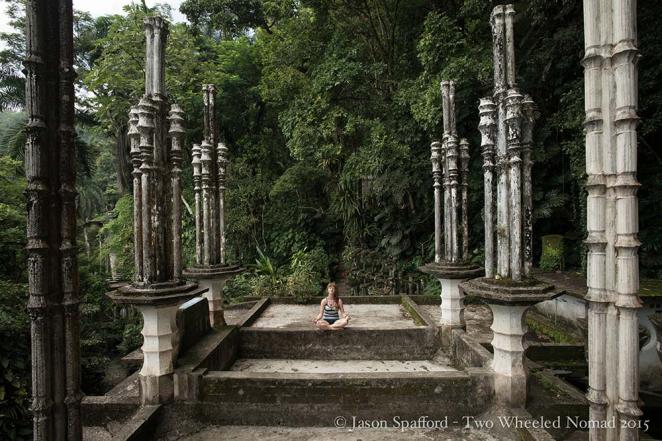
Several properties were acquired outside the town of Xilitla, after which Las Pozas was a constant source of work for the local people, over a period that spanned more than three decades. At times more than 150 people including carpenters, masons and gardeners poured their heart and soul in the creation of the garden.
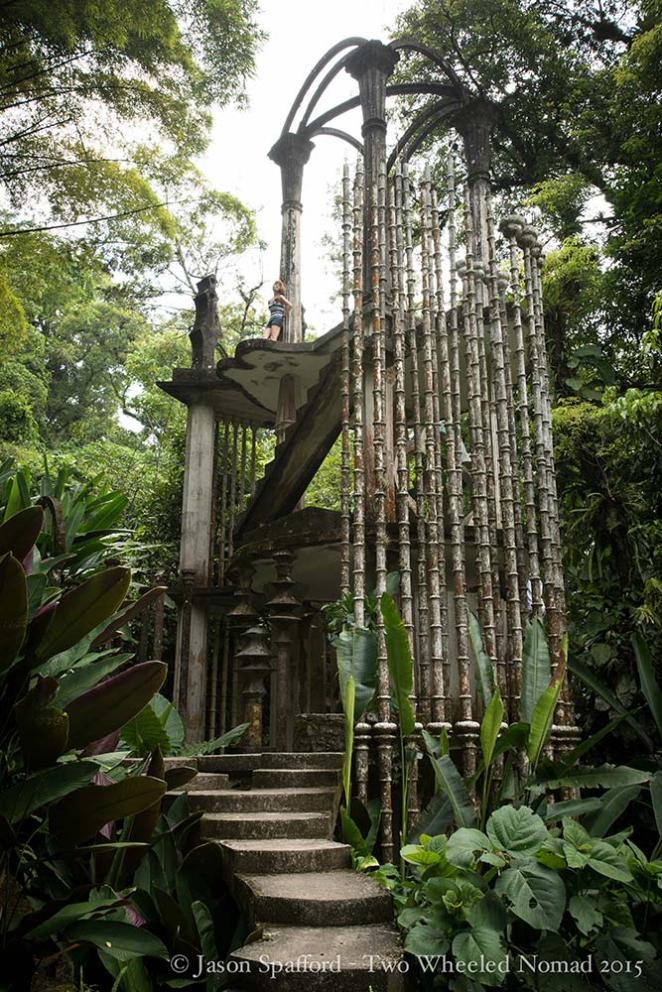
What started as a haven for Edward’s colossal orchid collection, and a home to exotic animals that he’d been given: deer, ocelots (dwarf leopards), snakes, flamingos and other birds—I was once given a goldfish—blossomed into this wild secret garden full of hidden nooks and crannies, majestic sculptures down striking dead ends and enchanting little spaces. All amid verdant rainforest. Hot and humid, my skin felt as slippery as the inside of an oyster; it didn’t take long before I found myself in the water clear and cold as virtue itself.
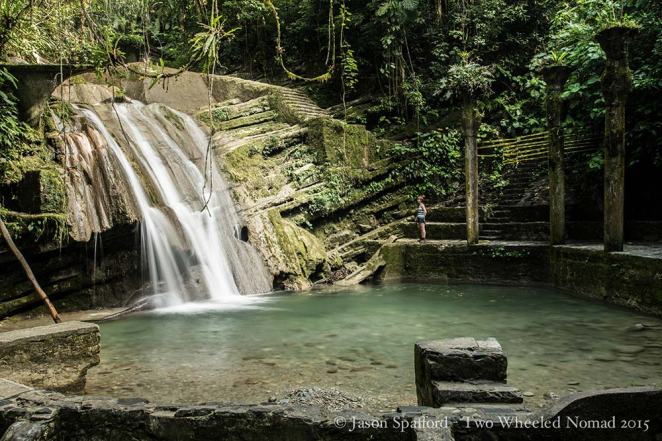
One minute you felt like Gene Kelly at the cascading pools, doing his waterlogged soft-shoe and singin’ in the rain, the next you became Aladdin upon climbing his middle eastern tower and then you slipped into Dorothy’s shoes, wide-eyed at the phantasm of Oz but terrified you’d never find your way home. Or never have another home to find one’s way to, but perhaps I’d waded in too deep. Or swallowed the red pill before falling down the rabbit hole…
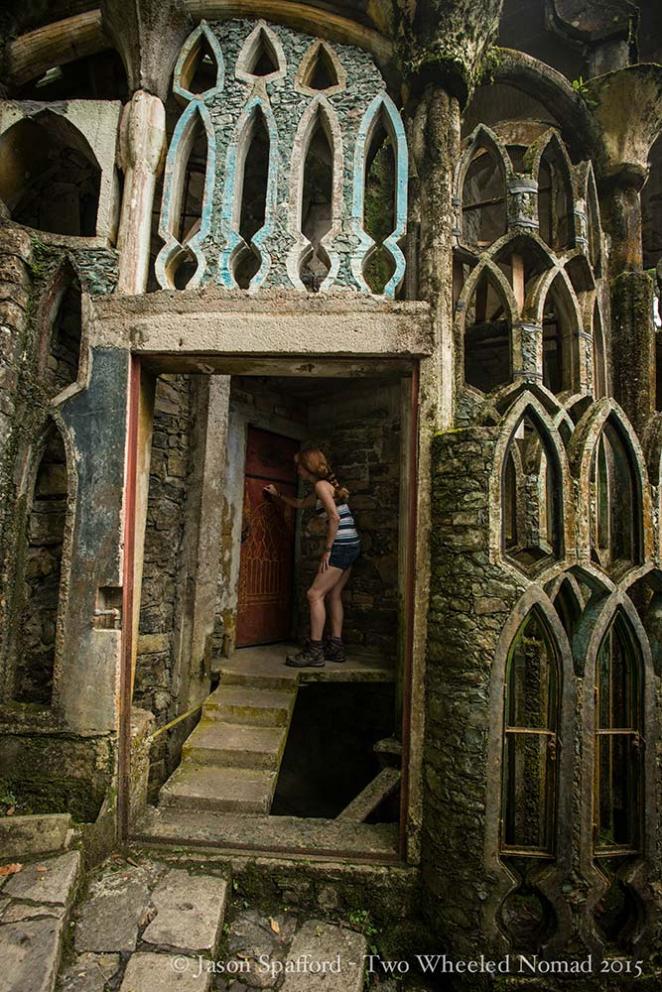
The shapes of the garden’s structures and sculptures were inspired by nature in the forest, flower heads, leaves and snake-like fauna. Akin to the Elven Kingdoms in Lord of the Rings. Purposely, some things were left incomplete, which made it look odd but all the more beautiful for its imperfections. I couldn’t help but think it’s what anyone might have done in Edward’s shoes; swopped a tired old life in high society for a shiny and exciting new one in Mexico.
